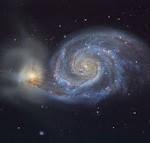Explore Articles Filed Under: Shamanism

Pantheism can perhaps best be understood by comparing it to theism. Pantheism denies two principal tenets of theism: it denies that the divine, the sacred, the numinous is in any sense a person, with intentions, goals, preferences, emotions, or desires; and it denies that the divine, the sacred, the numinous is in any way transcendent or ontologically distinct from the universe. On the other hand, pantheism affirms a principal tenet of theism: it affirms that there is such a thing as the divine, the sacred, the numinous. Traditional pantheists have been perfectly willing to talk about God, but not in any way that implies that God is either personal or transcendent.

Panpsychism is the philosophical position that consciousness occurs everywhere in the universe — that snails, trees, amoebas, rocks, thermostats, and electrons all, in some sense, have experiences. Clearly, such a philosophical position is of interest to animists and shamanists, even if it is not quite the same position that animists and shamanists hold about the universe.

There seems to be a new moral panic percolating through the blogosphere, this time about a mind-control date-rape zombie-making plant called borrachero, or burundanga, or devil’s breath — “the world’s most sinister drug.” Under its influence, we are told, you remain lucid and articulate yet absolutely compliant to any suggestion.

Cultural critics Jeremy Gilbert and Ewan Pearson point out that music can be understood either as possessing or producing meanings, or as producing effects which cannot be explained in terms of meaning — that “music can affect us in ways that are not dependent on understanding something, or manipulating verbal concepts, or being able to represent accurately those experiences through language.” Music thus has a metaphysical dimension; where music affects the body, the distinction between outside — where the music comes from — and inside — where the music is felt — is radically called into question.

If we are going to think seriously about shamanism, then we have to confront Mircea Eliade, whose famous book Shamanism: Archaic Techniques of Ecstacy has defined the terms of the discussion for more than fifty years. Yet the book is deeply flawed, and Eliade’s approach has been subjected to compelling anthropological, historical, and feminist criticism.

In yesterday’s National Catholic Reporter, columnist John Allen tells the following story. In the summer of 2002, Pope John Paul II was in Mexico City to canonize Juan Diego, the Aztec visionary devotee of Our Lady of Guadalupe. On the day after the canonization mass, John Paul also beatified two indigenous martyrs.

My teacher don Roberto Acho knows hundreds of plants, at least in the sense that he is familiar with that many, in the same way that a biomedical physician probably knows hundreds of medicines. I think most shamans — like most biomedical physicians — regularly use a few dozen plant medicines in their everyday routine practice, and go outside that number only in difficult cases, perhaps after consultation with a specialist. Even so, I have often wondered how a shaman remembers all those plants.

Tulku is a group with constantly shifting membership gathered around multitalented musician and producer Jim Wilson. Wilson has worked with many of the most important figures in contemporary Native American music — Robbie Robertson, the Little Wolf Band, Joanne Shenandoah, Primeaux and Mike. Wilson’s work has centered on intriguing cross-cultural musical collaborations — with Russian psychiatrist Olga Kharitidi on Siberian shamanism, with Consuelo Luz on ancient Sephardic prayers and traditional love songs in Ladino, with James Twyman on peace prayers from world religious traditions. He has worked musically with spoken word material from Timothy Leary, Alan Ginsberg, and Timothy Wyllie.

The plant spirits in the Amazon love strong, sharp, sweet smells. Thus, one way to acquire protection against malevolent persons and their pathogenic projectiles is to acquire such a sweet smell oneself, as opposed to the ordinary human smell, including the smell of human sex, which the spirits dislike. Shamans achieve this state, and provide it for their patients, by putting substances with sharp sweet smells either on or inside the body.

The movie Blueberry is an adaptation of a Western comic book series written by Jean-Michel Charlier and illustrated by Jean Giraud, also known as Moebius, a science-fiction artist of considerable distinction. The movie is loosely based on two issues of these comic books — so loosely, in fact, that the film was disowned by the family of the deceased Charlier. What’s a Shipibo shaman doing in the Old West?

Discussing the article:
Hallucinogens in Africa